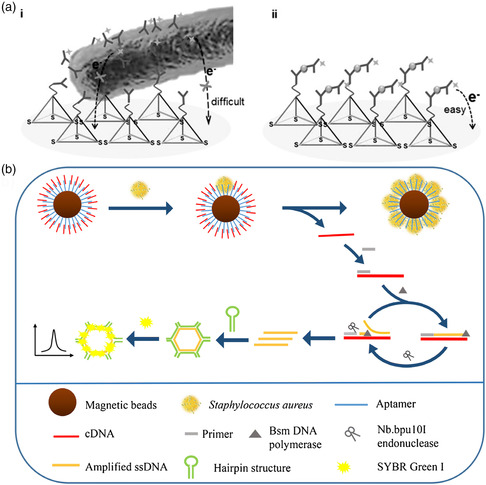Figure 3.

Strategies for the DNA nanostructure‐based detection of whole pathogens. a) Electrochemical detection of E. coli by antibody‐modified DNA tetrahedra on a gold electrode and FeC‐labeled antibodies as a redox probe. Due to the large size of the bacterium (panel i), charge transport between the probe antibodies and the electrode surface is hindered. This problem does not occur when detecting molecular biomarkers from cell lysate (panel ii). Reproduced with permission.[ 82 ] Copyright 2015, John Wiley and Sons. b) Upon binding of S. aureus, a DNA template is released from aptamer‐modified magnetic beads and multiplied by the interplay of polymerase and endonuclease enzymes. The amplified DNA strands open hairpins and facilitate their assembly into DNA hexagons, which are loaded with an intercalating dye for fluorescence detection. Reproduced with permission.[ 83 ] Copyright 2020, Springer Nature.
